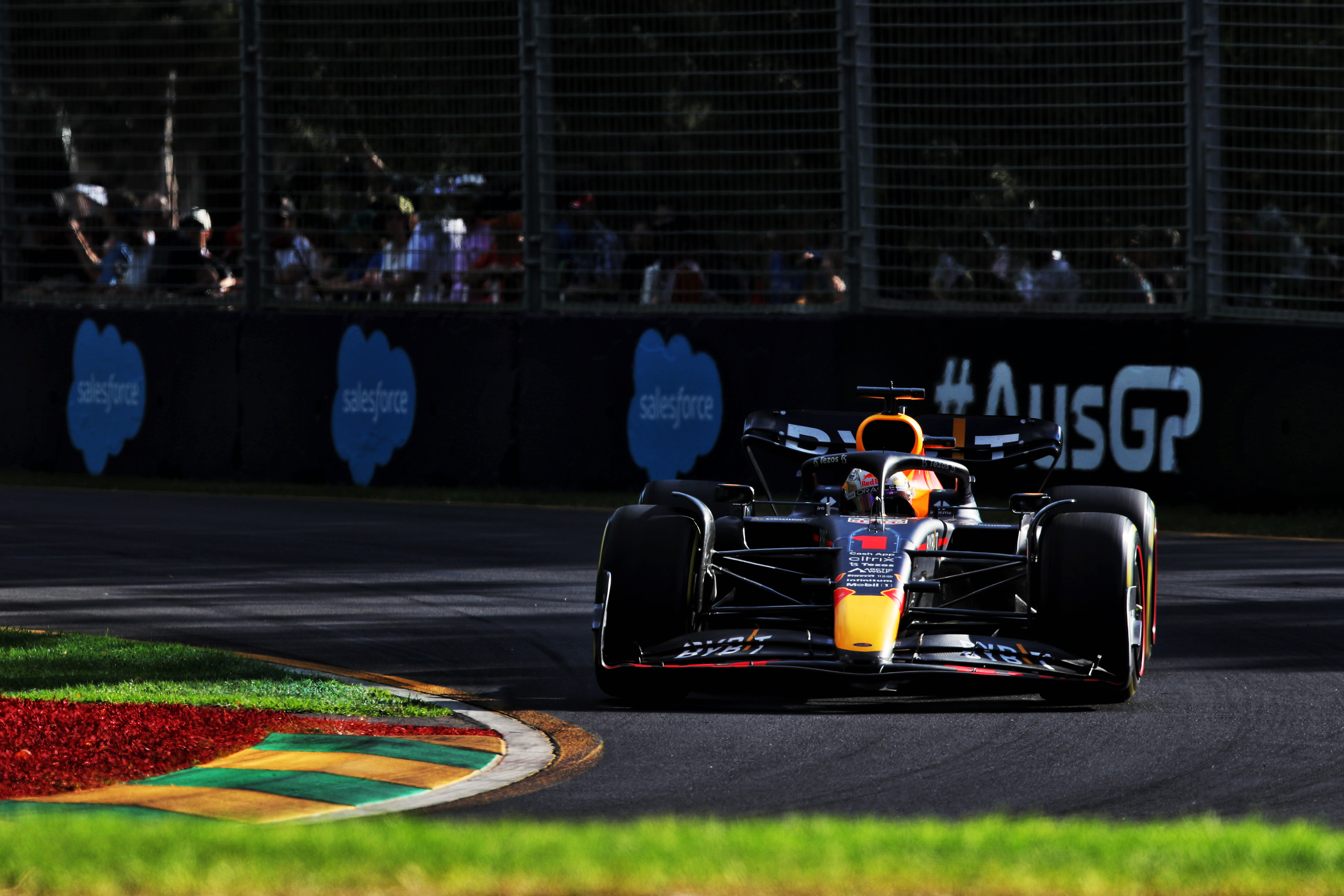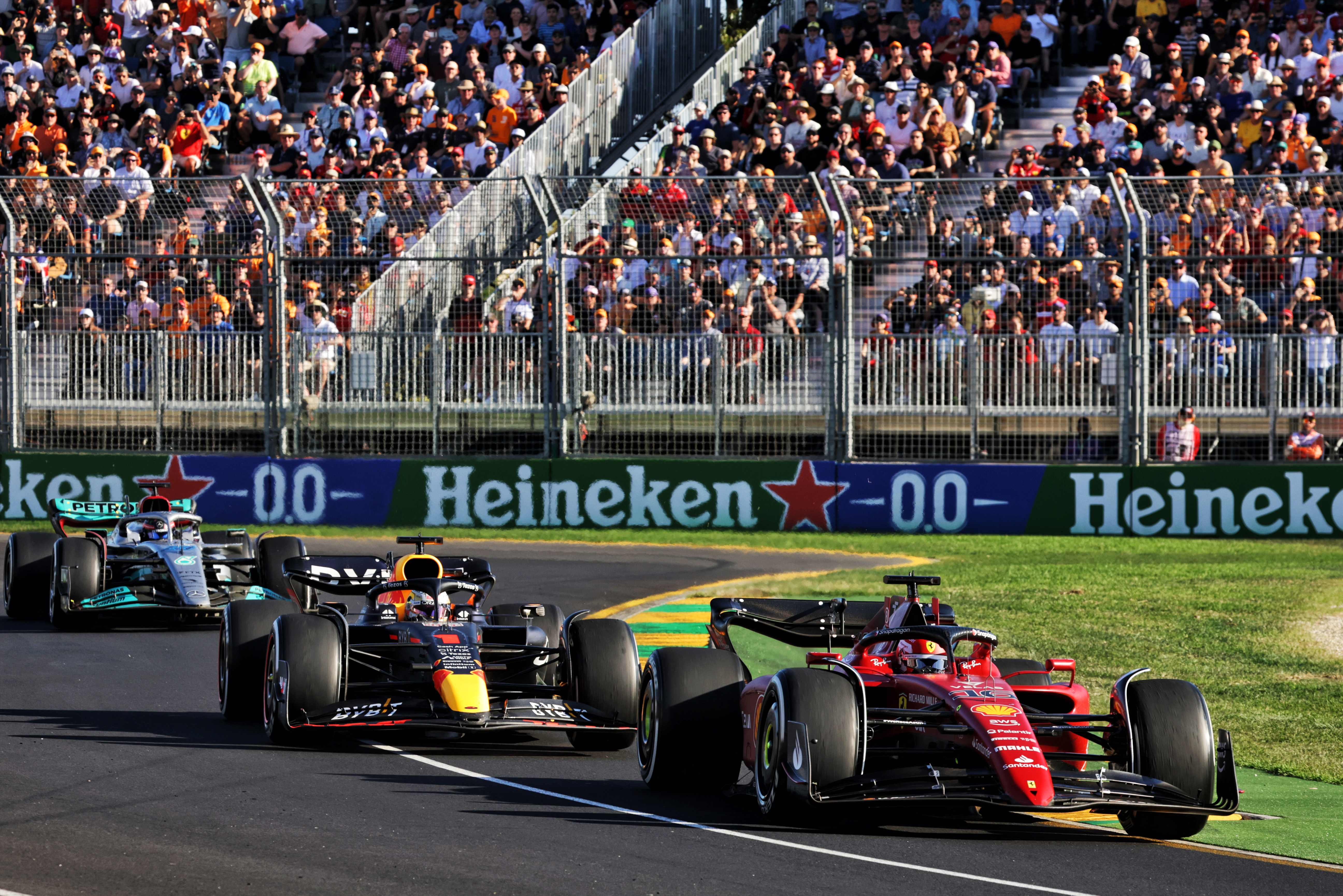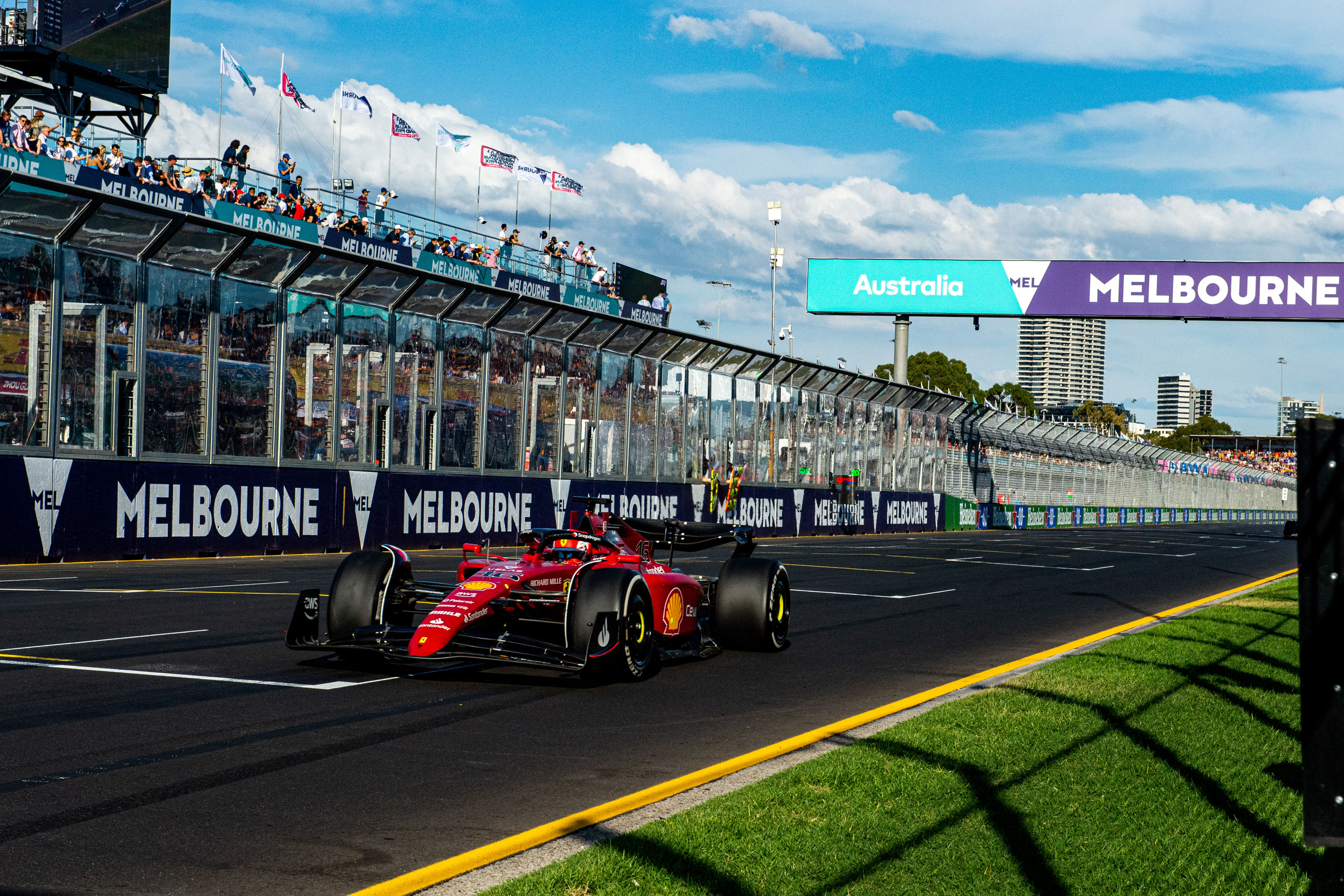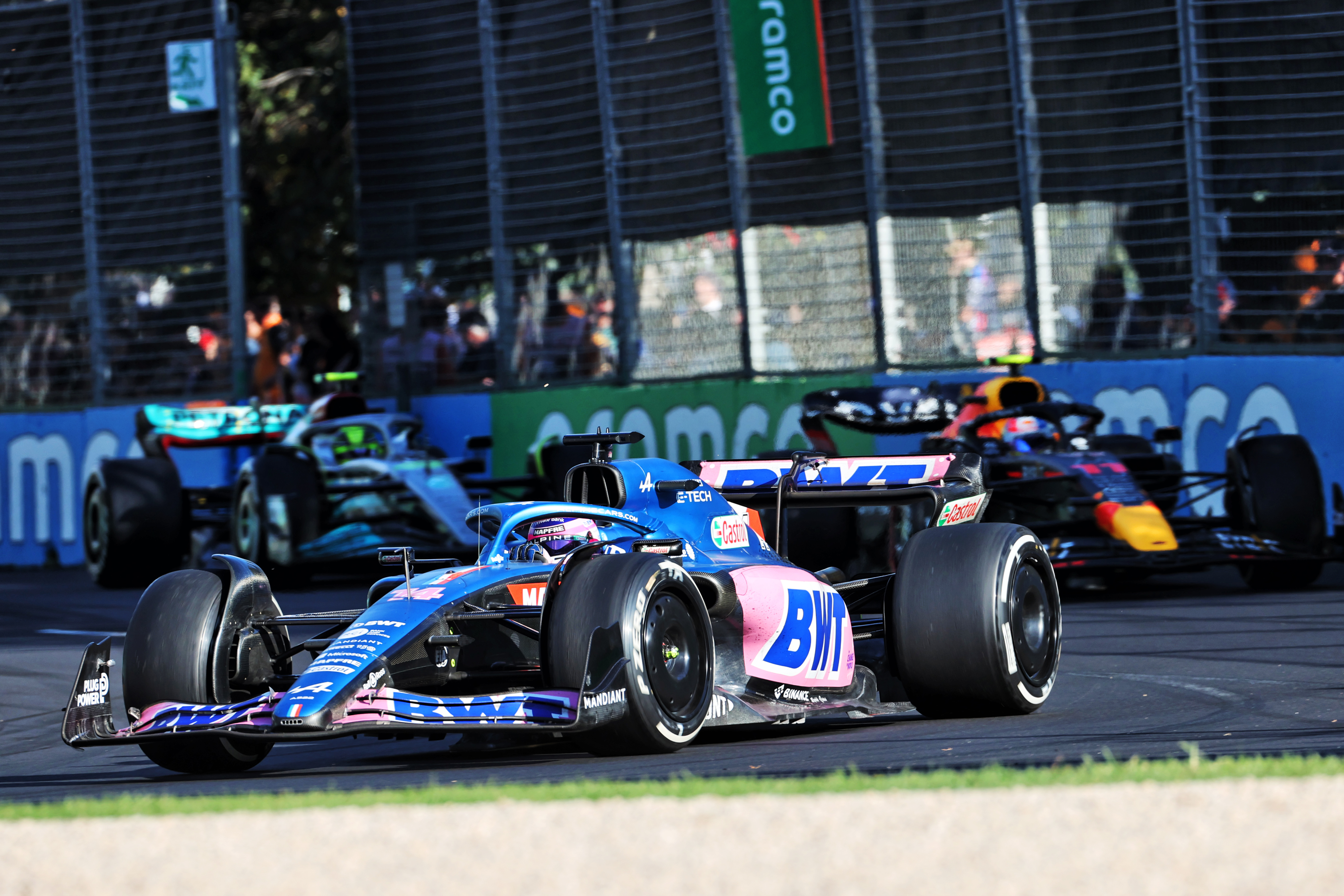Up Next

A beautiful late afternoon in the Albert Park sunshine, fans filling the place, in the grandstands, up close trackside on the banks, sitting in the park infield watching it on the big screen, the smell of cut grass in the warm air.
Just a lovely celebratory event two years after F1 stared into the abyss and Melbourne went into hibernation. A strong Australian-Italian contingent too, with the red shirts and banners. Charles Leclerc gave them the most perfect day of all. Pole, start-to-finish victory, fastest lap.
His title rival Max Verstappen was giving forlorn chase but the Red Bull just didn’t have the Ferrari’s pace – even before it stopped with a fuel leak, promoting the sister car of Sergio Perez to second and the Mercedes of George Russell to third, the latter leapfrogging ahead of team-mate Lewis Hamilton thanks to opportune timing of a safety car giving him a very time-cheap pit stop.
The Mercs were made to look better than they were by Red Bull. The McLarens of Lando Norris and Daniel Ricciardo ran with the silver cars in the early stages but were ultimately distanced by them and finished fifth and sixth. They too were flattered by circumstance. When measured against Ferrari, these teams were as far off as usual. Only Red Bull dropped away.
Maybe Ferrari would have been the fastest car in the place regardless, but the Red Bull was not in its balance sweet spot. The way the track had evolved from Friday caught it out. Then, Red Bull was seeing rear graining on the medium tyre. So it adjusted accordingly and went several steps in that direction – within variations between Verstappen’s car and that of Sergio Perez – and by the time it was realised the rubbering of the track had fundamentally changed the tyre challenge, it was too late in the era of parc ferme.

Front graining was very much the general problem, but particularly for Red Bull from Saturday onwards. Part of the set-up response to Friday’s rear graining was to run a little more rear wing flap. Its end-of-straight speed advantage was not as big as usual, albeit still there.
Its balance, in particular through the tight, understeering-inducing twists of Sector 3, was poor. “I just don’t get why I’m spinning,” radioed Verstappen on Saturday morning after going off at Turn 13. “It felt like a handbrake in that corner. It’s really hard to feel the balance of the car.”
Perez gave further detail after a race in which he’d had to work hard to emerge on top of a battle with the Mercs and during which he too had a grassy moment at Turn 13.
“I think Ferrari was super strong today,” Perez said. “We couldn’t match them at any point. I think it’s the first weekend that they are a step ahead… We took a bit of the wrong directions with the car… Turn 13, we have to do a lot of compromises for that, which really affect us throughout the circuit. So yeah, it shows in that corner particularly… We are very sensitive, and it’s really easy to get it wrong.”
Ferrari, with its typically bigger rear wing, didn’t find any rear graining on Friday and just kept adjusting to the circuit evolution. Front graining of the medium was there but not to an excessive degree. Maybe the car’s sweet spot is wider than the Red Bull’s – we don’t really know yet after a three-race sample – but it was very definitely bang in the middle of it.

What that did, once Leclerc had beaten Verstappen off the line, was force the Red Bulls to push hard to keep up. Which, without the sweet balance of the Ferrari, induced that front-left graining, thereby amplifying Leclerc’s advantage.
The F1-75 just looks so good, so versatile. Good on every type of corner, good onto the straights, great power delivery, balanced and good with its tyres. It porpoised pretty severely towards the end of the longest straights – the approach to the fast chicane of Turn 9/10 and into Turn 1 – but apparently it looked worse than it felt.
“It doesn’t disturb me too much,” said Leclerc of the porpoising. “We need to tackle it because it can affect consistency. But it’s not like I could have gone faster if it wasn’t for the bouncing. The only time it was a factor was on the restarts I wasn’t confident I could brake extremely hard for Turn 1 on the restart because of the bouncing. But otherwise ok.
“It’s the first time I’ve been able to dictate the gap in my F1 career,” the now four-time winner said. “The car was just incredible today. What a pace.”
But just as Ferrari was enjoying its most competitive weekend for a very long time, its other driver Carlos Sainz had a desperately unlucky time of it.
Fernando Alonso’s Q3 accident brought the red flags out just as Sainz was about to cross the line for what would have been a decent grid position. Instead, he started ninth and as such opted to fit the hard tyre, which was desperately difficult to bring up to temperature, giving him a terrible start exacerbated by an electrical problem with the steering wheel a few minutes before the start.

It was replaced on the grid by a spare that didn’t have the pre-settings in it, contributing to the anti-stall being triggered. Struggling with cold tyres in the lower half of the pack, he spun into the Turn 9-10 gravel on the second lap.
But even the two Red Bulls-against one Ferrari dynamic didn’t present any threat to Leclerc. They’d have needed to get close enough to apply pressure around the pit stops for that to have mattered. Leclerc was up and away – once at the start, again at the restart from the Sainz-induced safety car.
Perez, meanwhile, needed 10 laps before he was able to repass Hamilton, who had put an incisive move up the inside off the start after Perez had to back off so as not to hit Verstappen.
By the time the pitstop window opened from around lap 17, Leclerc led Verstappen by 8.3s. Even stopping four laps later than the Red Bull, Leclerc was still almost 7s ahead as he rejoined with both now on the robust hard tyres. Game over.
Unless of course, there was another safety car to allow Verstappen a restart opportunity. It came as Sebastian Vettel, running at the back, crashed his Aston Martin for the second time in the weekend just after Hamilton had pitted but before Russell had. This 12-second saving vaulted the number 63 Mercedes past the number 44 car.
On the restart, Leclerc suffered the only bit of jeopardy of his entire weekend. He probably over-thought how best to get the jump on Verstappen.
“In the penultimate corner I tried to prepare by staying on left but I picked up old rubber and lost so much time,” he said.
The Ferrari understeered out wide onto the main straight and Verstappen was into its slipstream, though perhaps not as close as he was trying for. His tyres were colder than ideal and he reckoned the reason for that was that the Aston safety car – which alternates with a Mercedes one race by race – was not quick enough.
“We went into the last corner and I could see Charles understeering, so I’m like ‘OK I’ll back off a bit more and get a better line’ but there was just no grip,” Verstappen said.
That – and maybe the extra crank of rear wing Red Bull has built its set-up around – meant a defensive Leclerc was able to fend Verstappen off into Turn 1. Within three corners the Ferrari’s rubber had recovered – and he again pulled away at over half-a-second per lap without having to eat into his reserves of rubber.

Russell’s stop under the safety car took him past not just Hamilton, but Perez too and he was now running third. The yet-to-stop Alonso ran fourth ahead of Perez and Hamilton but would quickly be picked off by them.
Alonso’s was a weekend of lost opportunity, through no fault of his own. Scintillating in qualifying, he’d conceivably have put the Alpine on the second row had a little rubber o-ring in the hydraulics system not broken as he raced up to Turn 11 in Q3. The resultant pressure drop put the system into fail-safe mode – at the most awkward moment possible, with the car all loaded up on corner entry. From there into the barriers.
Starting on the fifth row instead of the second led to the strategy of starting on the hard – which would have worked but for the timing of the Vettel safety car. He eventually switched to mediums on the 39th lap but the closing up of the field from the safety car meant this cost a lot of positions.
It put him mid-pack among a DRS train led by Alex Albon’s non-stopping hard-tyred Williams (which would pit on the last lap for the mandatory tyre change to finish 10th) from Esteban Ocon, Lance Stroll, Pierre Gasly and Valtter Bottas. Out of the points, he pulled out of that train near the end for a fresh set of tyres and an assault on the race’s fastest lap, just for the hell of it. He very nearly achieved it.
Leclerc had been requesting he go for fastest lap and the extra point that goes with it. His engineer was against it, reasoning that he already held it and didn’t think anyone would beat it. On the last lap, Leclerc ignored that advice and lowered his earlier benchmark by a couple of tenths. Had he not done so, Alonso’s last lap would have deprived him of the point.

The Alpine was suited to the circuit but was genuinely as quick as the Mercedes and quicker than the McLarens (which were losing a lot of time under braking). Without the niggling little reliability problem in qualifying, he could have been racing Hamilton and Russell on merit.
As it was, the team had to make do with a quiet seventh-place finish from Ocon who headed the DRS train from Bottas and Gasly at the end ahead of the last lap-stopping Albon.
Leclerc lies 34 points clear in the championship already. “It’s difficult to think about the championship after just three races but we’ve always been there,” he concluded. “If it stays like this obviously we’ll have a chance for the championship, which is great after last two years.”






